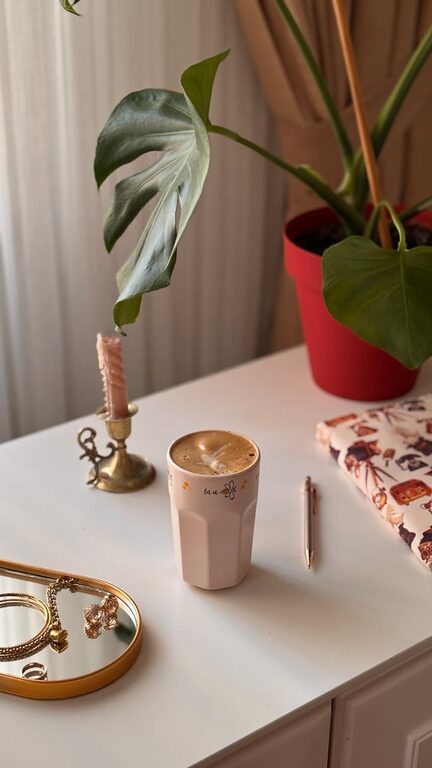
How to Create a Relaxing Home Workspace for Better Focus
Creating a relaxing home workspace is essential for maintaining focus, reducing stress, and improving productivity. Whether you work remotely full-time or need a quiet corner for occasional tasks, setting up a calm and inviting work area can make a big difference in your daily routine. In this post, we’ll explore practical ideas to help you design a workspace that feels comfortable and inspiring.
Why a Relaxing Workspace Matters
Your environment has a strong impact on how you feel and perform. A cluttered, noisy, or uncomfortable space can increase stress and decrease motivation. On the other hand, a well-organized and peaceful workspace can help you:
– Stay focused on tasks
– Feel more relaxed throughout the day
– Reduce distractions
– Boost creativity and productivity
Taking the time to create a workspace that suits your needs doesn’t have to be complicated or expensive.
Step 1: Find the Right Location
Start by choosing the ideal spot in your home for your workspace. Consider these factors:
– Natural light: Position your desk near a window if possible. Natural light improves mood and energy.
– Noise level: Choose a quieter area away from household noise or heavy foot traffic.
– Space: Make sure there is enough room for your desk, chair, and any supplies.
– Privacy: If you need video calls or focus time, pick a spot that offers some privacy.
If space is limited, consider creative solutions like a fold-away desk, a corner workstation, or even a small table in your living room.
Step 2: Choose Comfortable and Functional Furniture
Comfort is key to staying relaxed and productive. When selecting furniture, keep these points in mind:
– Ergonomic chair: Select a chair with good back support and adjustable height. This helps prevent back pain and fatigue.
– Desk height: Your desk should allow your arms to rest comfortably at a 90-degree angle while typing or writing.
– Desk size: Make sure it’s large enough to hold your computer, notebook, and other essentials without feeling cramped.
– Additional furniture: Consider shelves or storage units to keep supplies organized and your workspace clutter-free.
If buying new furniture isn’t an option, try adding cushions or footrests to improve comfort.
Step 3: Declutter and Organize
A cluttered desk can quickly lead to a cluttered mind. Keeping your workspace tidy and organized helps maintain a sense of calm.
– Use storage boxes, trays, or drawer organizers to keep papers, pens, and other items in order.
– Keep only the essentials on your desk surface to avoid distractions.
– Regularly sort through and remove items you no longer need.
– Use cable organizers to prevent wires from tangling.
A clean and orderly desk creates an inviting space where it’s easier to focus.
Step 4: Add Calming Colors and Decorations
Colors influence our emotions and energy. To promote relaxation in your workspace:
– Choose soft, muted tones such as blues, greens, or neutrals to create a calming atmosphere.
– Avoid overly bright or harsh colors that may feel distracting.
– Add personal touches like photos, inspiring quotes, or artwork that uplift you.
– Incorporate plants to bring freshness and a little nature indoors. Greenery is known to reduce stress and improve air quality.
Balance decor with simplicity to keep the space peaceful rather than cluttered.
Step 5: Control Lighting
Proper lighting helps reduce eye strain and keeps you alert.
– Use a combination of natural and artificial light.
– Consider a desk lamp with adjustable brightness for focused tasks.
– Avoid harsh overhead lights that create glare or shadows.
– Position your screen to avoid reflections from windows or lights.
Good lighting contributes strongly to a comfortable workspace.
Step 6: Minimize Distractions
To stay relaxed and focused, it’s important to limit distractions.
– Use noise-canceling headphones or white noise machines if ambient sounds are disruptive.
– Turn off unnecessary notifications on your phone and computer during work periods.
– Set boundaries with others in your home to respect your work time.
– Use apps or browser extensions to block distracting websites if needed.
Creating a distraction-free zone helps keep your mind calm and on track.
Step 7: Incorporate Relaxation Techniques
Adding small rituals or tools that promote relaxation can improve your overall work experience.
– Keep a diffuser or candle nearby with soothing scents like lavender or eucalyptus.
– Practice deep breathing or gentle stretching during breaks.
– Set a timer to remind yourself to take regular short breaks away from screens.
– Use calming music or nature sounds in the background to enhance focus.
These simple habits help you recharge and maintain a relaxed mindset through the day.
Final Thoughts
Creating a relaxing home workspace is all about thoughtful design, comfort, and reducing stressors. By finding the right location, choosing supportive furniture, organizing your space, and adding calming touches, you’ll build an environment that helps you work with ease and focus. Remember, your workspace should work for you—feel free to adjust it as your needs change.
Start today by making one small improvement and enjoy the benefits of a peaceful, productive home workspace!
